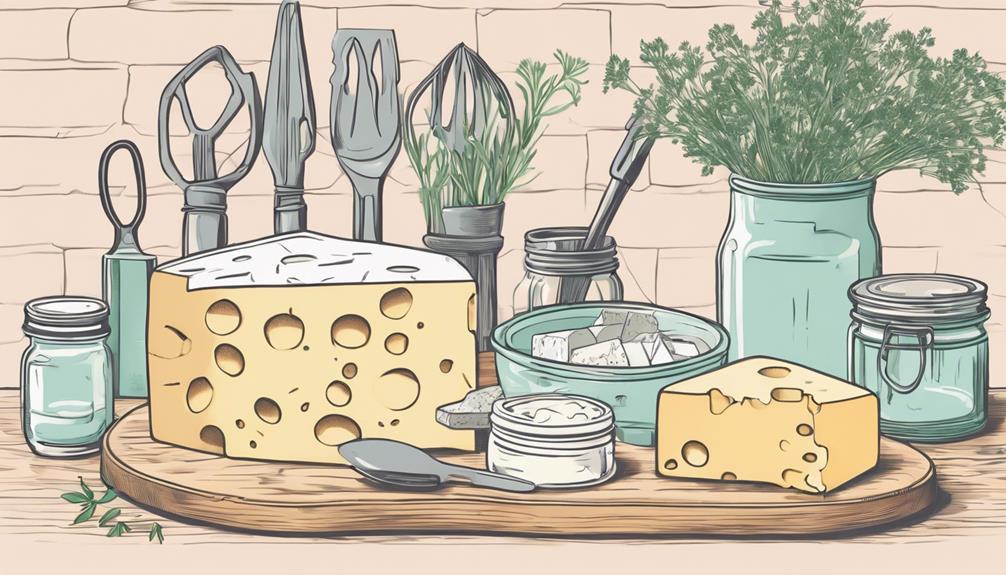See All: Cheese Making
Watch How To Do This Here…
YES! You can make cheese at home. Take our FREE 4-Part video training series to simplify cheesemaking for everyone. No waste. No overwhelm. No missing steps. You can make delicious, healthy cheese, even if you only have access to grocery store milk and regular kitchen equipment…
Click Here To Watch Step By Step Now
“Hey, I’m just getting into cheese making here in Christchurch, New Zealand, and I’m on a pretty tight budget. I’ve seen some pricey equipment out there, especially for molds and presses. Are there any DIY alternatives I can use instead of buying these expensive tools?” Thanks, Emma, Christchurch, New Zealand.
Hey Emma! It’s so awesome that you’re diving into cheese making! It’s such a rewarding hobby, but you’re right—some of that equipment can really add up. Luckily, there are lots of DIY alternatives for cheese molds and presses that you might already have at home or can easily find for much less. Let’s explore some of these alternatives together.
Understanding the Role of Cheese Molds and Presses
Cheese molds and presses are essential tools in cheese making. They help shape the cheese, expel excess whey, and ensure the final product has the right texture. However, you don’t need to spend a fortune to get good results. Let’s break down some creative and budget-friendly alternatives.
DIY Cheese Molds
Cheese molds are used to shape cheese while it sets. Here are some everyday household items you can use as a low-cost alternative:
1. Plastic Containers
Plastic containers, like those used for yogurt or take-out food, can make excellent cheese molds. Here’s how you can use them:
- Prepare the Container: Wash it thoroughly and ensure it’s dry.
- Make Drainage Holes: Use a hot needle or a small drill to create evenly spaced holes at the bottom and sides for whey drainage.
- Example: A one-liter yogurt container can work perfectly for soft cheeses like ricotta or cottage cheese.
2. Colanders
A colander is another handy makeshift mold:
- Line with Cheesecloth: Place a clean cheesecloth inside to hold your curds.
- Drainage: The holes in the colander will naturally allow whey to drain away.
- Example: This is ideal for pressing soft to semi-soft cheeses.
3. PVC Pipe
PVC pipe segments can be customized to the size you need:
- Cut the Pipe: Cut a piece of PVC pipe to your desired length.
- Sanitize: Clean it thoroughly with hot water and soap to ensure no chemicals from the manufacturing process remain.
- Make Drainage Holes: Drill small holes on the sides and bottom.
- Example: A 4-inch diameter pipe is fantastic for making small to medium-sized cheese wheels.
DIY Cheese Presses
Pressing cheese properly is vital for texture and aging. Here are some DIY ideas that can substitute for a professional cheese press:
1. Book Weight Press
Using household items like books can help press your cheese:
- Setup: Place your cheese mold on a flat surface with a draining container beneath it.
- Add Weight: Stack clean, heavy books directly on top of the mold.
- Example: This method is perfect for small batches where you can monitor the pressure easily.
2. C-Clamps
C-clamps can provide more consistent pressure:
- Setup: Place your mold in a sturdy frame where you can position the clamps.
- Clamp Down: Slowly tighten the clamps to apply even pressure.
- Example: Ideal for harder cheeses that require steady pressure over time.
3. Lever-Weight System
A simple lever system can effectively press cheese:
- Build a Lever: Use a sturdy board as a lever and place one end under a pivot point like a heavy block or edge of a countertop.
- Adjust Weight: Place weights (such as water jugs) at the other end of the lever to apply pressure to the cheese mold.
- Example: This is excellent for larger batches or cheeses that need a substantial amount of pressure.
Tips for Success
Here are a few extra tips to ensure your DIY cheese making endeavors are successful:
1. Cleanliness is Key
Ensure all your DIY equipment is thoroughly cleaned and sanitized before use to prevent any contamination.
2. Consistency in Pressure
Especially with DIY presses, it’s important to maintain consistent pressure. Check regularly to make adjustments as needed.
3. Experiment and Adapt
Don’t be afraid to experiment with different materials and methods. Cheese making is part science, part art. What works best for you might need some adjustment.
4. Seek Advice and Share
Connect with other home cheese makers, like on forums or local groups, to share tips and get feedback.
Final Thoughts…
Emma, it’s fantastic that you’re looking to make cheese on a budget. Remember, some of the world’s best artisan cheeses are made with the simplest tools and a lot of passion. Hopefully, these DIY alternatives for cheese molds and presses make your cheese-making journey smoother and more enjoyable. Happy cheese making in Christchurch!
Return To: Cheese Making
Free Step By Step Cheese Making Videos…
YES! You can make cheese at home. Take our FREE 4-Part video training series to simplify cheesemaking for everyone. No waste. No overwhelm. No missing steps. You can make delicious, healthy cheese, even if you only have access to grocery store milk and regular kitchen equipment…

